Crab-like animals have evolved into existence at least five unrelated times. It’s an intriguing enough phenomenon that scientists call it carcinization. Here’s why animals keep evolving into crabs, discussed in detail.
What Is Convergent Evolution?

One example of convergent evolution is the development of wings in both bats and birds.
©Luke Marcos Imbong / CC BY-SA 4.0 – License
Convergent evolution is defined as the evolution of similar characteristics in animals that don’t have a common ancestor with that characteristic. From a purely visual perspective, animals who have undergone convergent evolution appear like they are related to each other. However, they evolved into existence in completely separate ways.
Some examples of convergent evolution are wings on bats and birds. Another example is the streamlined bodies designed for swimming seen in sharks and dolphins.
What Is Carcinization?
Carcinization is a specific kind of convergent evolution where different decapod crustaceans evolve into crab-like animals. Some of the different crab-like animals that are currently on the planet have not had a common ancestor in about 250 million years, and this ancestor was not like a crab.
Today’s crabby crustaceans first had ancestors with cylindrically shaped bodies and large tails. They eventually changed into animals with rounder and flatter bodies with small tails.
4 Examples of Animal Types Representing Carcinizaton
Many individual species represent carcinization. However, only some of these species are true crabs, while others are false crabs. True crabs are in the Brachyura infraorder, and false crabs are in the Anomura infraorder.
What’s interesting about false crabs that are Anomura species is that they evolved independently into crab-like creatures three separate times within their infraorder. This is separate from the one evolutionary occurrence that created true crabs.
Below, we list a few of the crabby-bodied animals on the planet that are involved in carcinization. Both true crabs and false crabs are discussed.
1. True Crabs
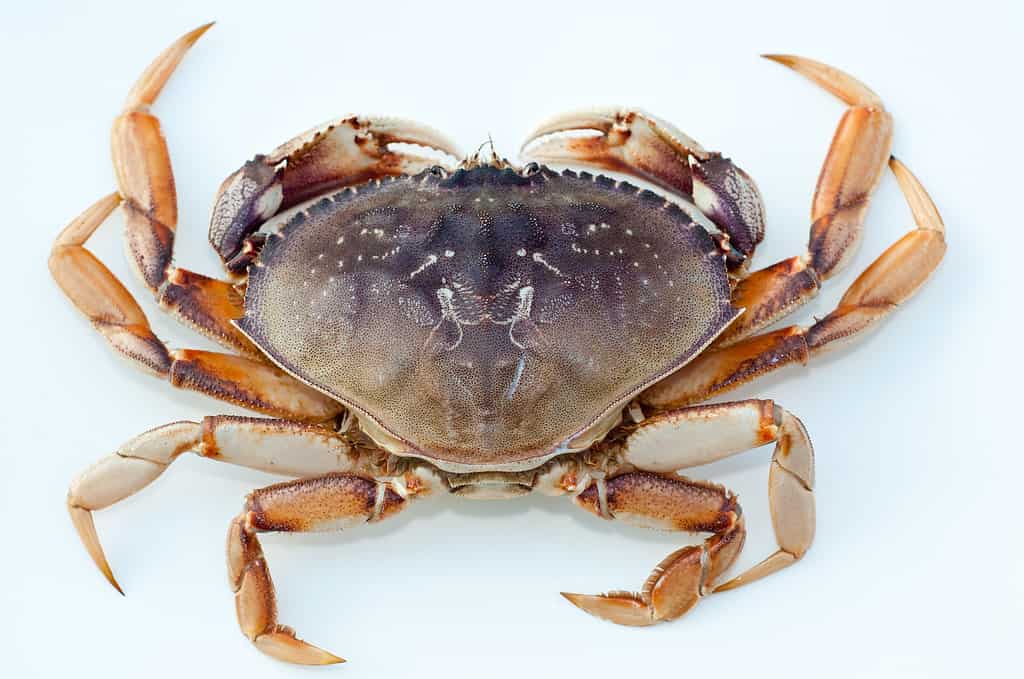
Dungeness crabs are an example of true crabs with an upper shell that’s one solid piece.
©kyue001/iStock / Getty Images Plus via Getty Images
The infraorder Brachyura contains true crabs, and there are around 7000 species identified as brachyurans. While each of the individual true crab species has unique characteristics that separate them from other species, they all share similar characteristics. These characteristics include bodies that are wider than they are long, and their upper shells are one solid piece.
Some true crab species include blue swimmer crabs (Portunas pelagicus), red rock crabs (Cancer productus), gaper pea crabs (Pinnixa littoralis or faba), and green shore crabs (Hemigrapsus oregonensis). Some of the more well-known species commonly fished for human consumption include Dungeness crabs (Cancer magister) and Maryland blue crabs (Callinectes sapidus).
2. King Crabs
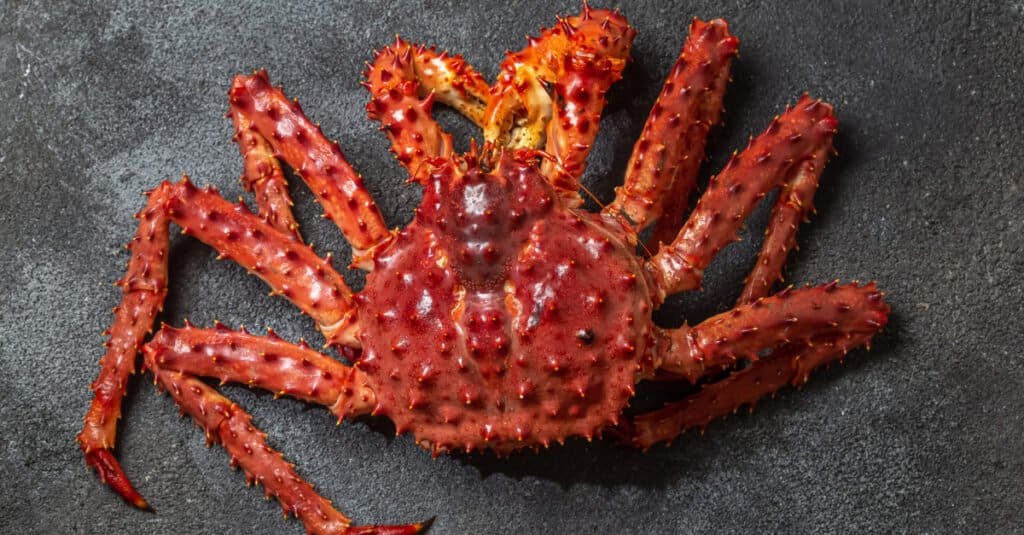
King crabs are false crabs that descended from hermit crabs.
©Larisa Blinova/Shutterstock.com
All of the crabs that aren’t true crabs are known as false crabs. King crabs and all of the subsequent crabs on this list are considered false crabs. They’re in the infraorder Anomura unless otherwise specified.
The families Lithodidae and Samouelle represent the animals known as king crabs, and they are an example of one of the branches of false crabs that evolved independently into their crabby forms. King crabs are the descendants of hermit crabs (Paguroidea), which aren’t much like crabs despite their name. Hermit crabs have abdomens that spiral, and they do not have the hard exoskeleton characteristic of other false crabs.
3. Porcelain Crabs
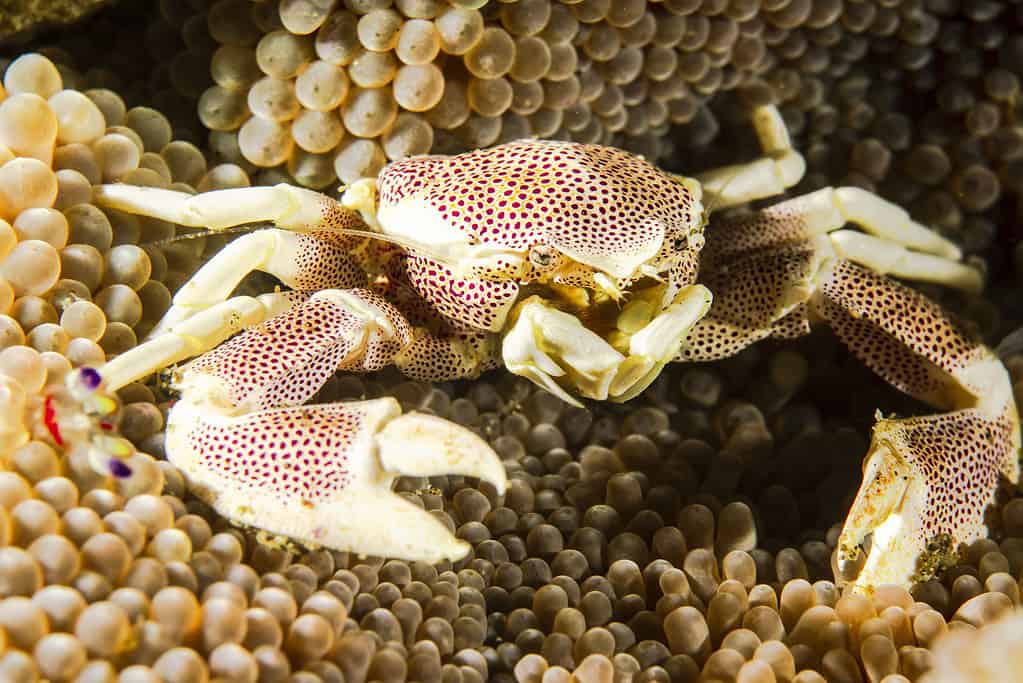
A false crab family known as porcelain crabs descended from squat lobsters.
©atese/iStock via Getty Images
Porcelain crabs (Porcellanidae) are a family of false crabs. Both porcelain crabs and hairy stone crabs (Lomis hirta) probably evolved from a common ancestor resembling a squat lobster. Squat lobsters (Munidopsis serricornis) are considered partially carcinized animals because they aren’t fully crab-like. Their squat yet somewhat cylindrical anatomy puts them somewhere between a lobster and a crab.
Descending from a squat lobster is much different than descending from a hermit crab. That’s because both of these ancestors have very different anatomies, so a different evolutionary selection was needed as they underwent carcinization.
4. Hairy Stone Crabs
Hairy stone crabs are a false crab species that probably evolved from the same squat lobster ancestor of porcelain crabs. However, how it developed into its crabby form may be a separate evolutionary process that spiraled out of the development of king crabs. This means that their exact evolutionary origins aren’t fully understood, but it’s widely accepted that their road through carcinization was unique.
Carcinization: What Is a Crab-Like Body?
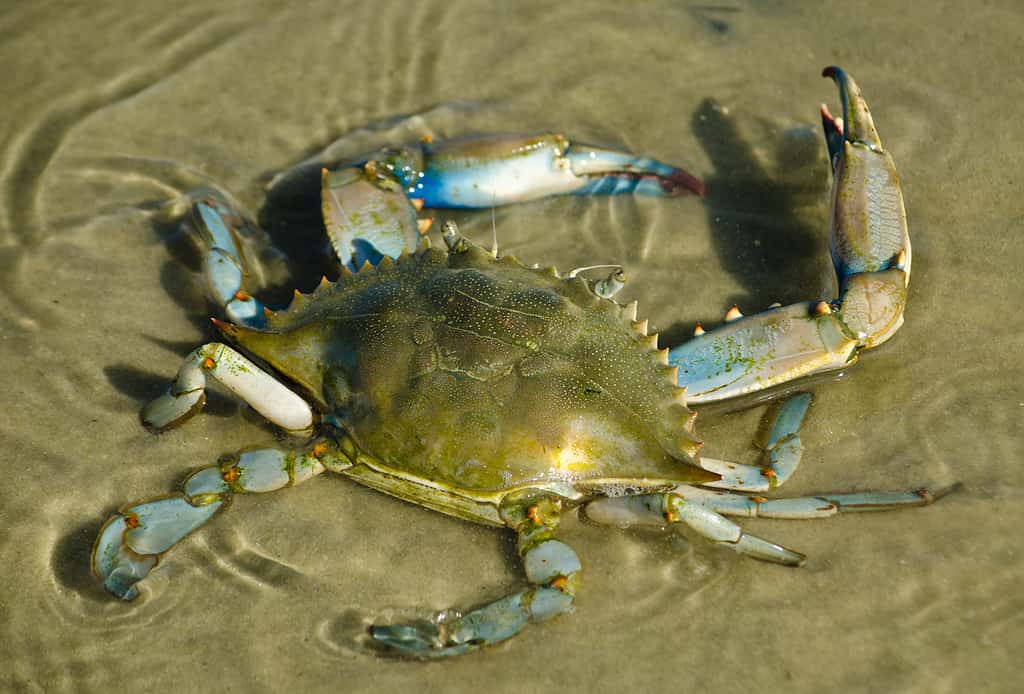
Crab bodies are flat, wide, and low-lying with exoskeletons and pincers.
©MeliaMuse/iStock via Getty Images
Crab bodies are flat and wide. Their vulnerable abdomens are not easily accessible as they’re on the underside of their low-lying body. In biological terminology, this means that they have a rounded and flattened carapace, and their pleon is protected and close to the ground.
Crabs also have hard exoskeletons and pincers. Additionally, they have walking legs, though true crabs have four walking leg pairs, while false crabs have three. False crabs still have four pairs of legs, but one pair is too small to use for walking.
Another way to tell true crabs apart from false crabs is the location of their antennae. True crabs only have antennae between their eyes. However, false crabs can also have antennae on the outer side of their eyes.
Why Do Animals Keep Evolving Into Crabs?
No one is exactly sure why animals keep evolving into crabs, though it most likely repeats because the body plan keeps proving successful. Crustaceans may have favored flat crab bodies so they could move sideways easily and fit into smaller spaces. Smaller tails may also keep more of their flesh protected as it is harder to access and chew off.
What Is Decarcinization?
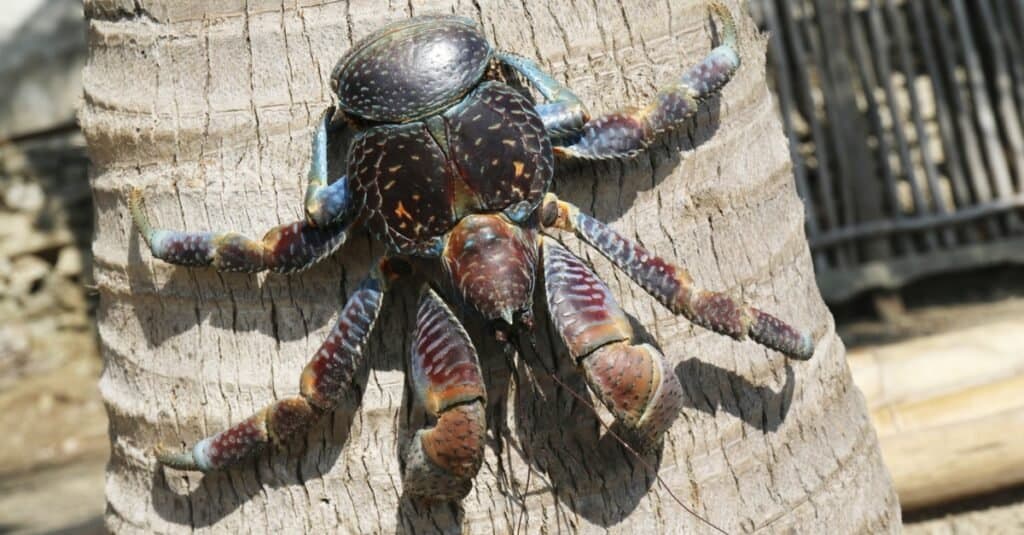
Coconut crabs are undergoing decarcinization as they are evolving away from a crab-like body.
©KYTan/Shutterstock.com
After evolving crab-like features, some animals have started evolving away from their crabbiness. Scientists believe that this has occurred more than seven different times. What led to the development of a crabby appearance is now giving away to adaptations that need a different kind of body shape.
Decarcinization can be seen in frog crabs (Ranina ranina) and coconut crabs (Birgus latro). Both of these crabs have bodies that are changing away from a stereotypical crab shape into something else.
These two species are not as squat, and they aren’t as low to the ground as some other false crabs. They’ve developed some crabby features, but they are no longer favoring these characteristics. They are instead traveling new and unique evolutionary paths that are diverging from their crabby nature.
The photo featured at the top of this post is © iStock.com/ANDREYGUDKOV
Thank you for reading! Have some feedback for us? Contact the AZ Animals editorial team.






